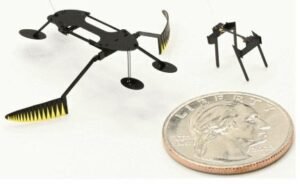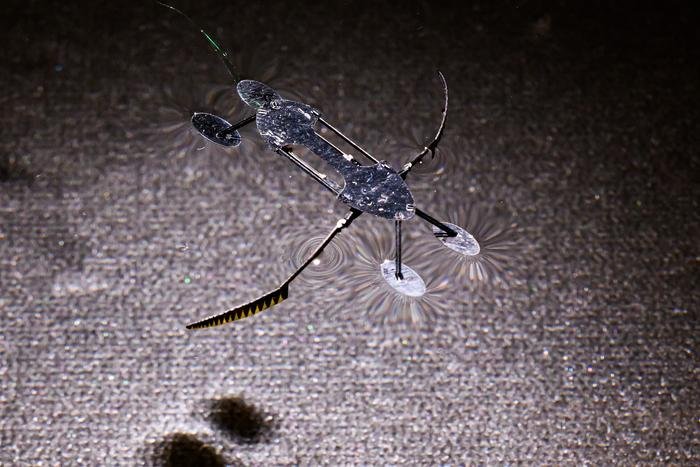Engineers from Washington State University (WSU) have created the smallest, lightest, and fastest micro-robots ever.
Inspired by actual mini-bugs and water striders, the insect-like micro-robots could one day be used for artificial pollination, search and rescue missions, remote environmental monitoring, micro-fabrication, or even robotic-assisted surgery.
Shape Memory Alloy Powers Motion of Micro-Robots
The waster strider-inspired micro-robot weighs only 55 milligrams, while the mini-bug-inspired robot clocks in at a paltry eight milligrams. Perhaps equally impressive, both can move at about six millimeters a second.
A typical ant weighs about 5 milligrams and can move at nearly a meter per second. While extremely slow compared to real-life insects, this is significantly faster than other micro-robots based on the same technology.
“That is fast compared to other micro-robots at this scale, although it still lags behind their biological relatives,” said Conor Trygstad, a PhD student in the School of Mechanical and Materials Engineering and lead author of the published work. An avid fly fisherman, Trygstad points out that real water striders move using an efficient rowing motion, while his micro-robot strider is currently limited to a less efficient flat flapping motion.


The key technology driving the locomotion of these micro-robots are the miniaturized actuators that weigh less than a milligram each. Specifically, they don’t have moving joints, gears, or hinges like one would typically find in a mechanical moving device.
Instead, these micro-actuators are made from something called “shape metal” alloy (SMA) that changes shape when its temperature changes. The result is an extremely small yet mechanically sound “machine” that can propel the micro-robots at these previously unattainable speeds.
“They’re very mechanically sound,” said Trygstad of the shape memory alloy micro-actuators. “The development of the very lightweight actuator opens up new realms in micro-robotics.”
Although SMA’s are already in use in larger mechanical devices, they typically move too slowly for things like locomotion. However, the actuators used in these micro-robots are extremely small, measuring about 1/1000th of an inch in diameter. This small size allows them to be rapidly heated and cooled down by applying an electric current, resulting in a mechanical insect that can flap its fins or move its legs up to forty times per second.
The unique SMA actuators also have other advantages. First, they can lift up to 150 times their own weight. Second, they are extremely energy efficient as the electric current needed to drive their movements is significantly less than would be needed to drive a similar motor that uses traditional joints and gears.
“The SMA system requires a lot less sophisticated systems to power them,” Trygstad explained.
Insect-Inspired Robots Could Have Numerous Practical Applications
In their published work, which appears in the proceedings of the IEEE Robotics and Automation Society’s International Conference on Intelligent Robots and Systems, the engineers say they would like to create a water-strider that moves across the top of the water as well as just beneath the surface just like the real thing. They also say they would like to look into ways to power the device that doesn’t require them to be tethered to a power supply. Options include tiny batteries as well as something called catalytic combustion.
While these micro-robots are still in the development stages, the engineers say they could one day have several practical applications. These include but are not limited to uses in artificial pollination, search and rescue missions, remote environmental monitoring, micro-fabrication, or even robotic-assisted surgery.
Based on their appearance, they will also likely create at least one writer’s sci-fi-inspired nightmare.
Christopher Plain is a Science Fiction and Fantasy novelist and Head Science Writer at The Debrief. Follow and connect with him on X, learn about his books at plainfiction.com, or email him directly at christopher@thedebrief.org.

